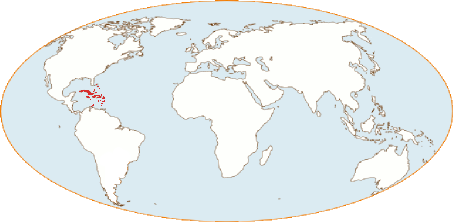Your search results [16 articles]
Maby-beer and the puberty ritual for Carib girls.
The first menstruation triggers the trials and ceremonies that mark the young girl's passage to the status of a woman who can marry, participate in collective celebrations, drink beer and question the shaman about her future. A severe fast of one month awaits the young girl, incubated by her mother who comforts her by bringing her potatoes and sweet potato beer. In this so specific context, the sweet potato beer acquires medicinal (nourishing during the fast) and purifying properties. The body fasts, the spirit purifies itself.
LHere again, the Anonymous of Carpentras describes in 1628 in the most precise and vivid way the progress of the transition to womanhood, when the other testimonies of the time silenced or ignored this humanity of the so-called "savages", a humanity so close of the European mores of that times :
" When a father or mother begins to notice that their daughter is having her purgations, they invite a few inhabitants (from the main ones in the village) who go to the hut of the girl's father, in whose presence they take her, paint her all red and then shave off all her hair. After that, she is made to sit on a large flat stone they call tebou, and then she is girdled under her armpits with a cotton thread, as well as her toes with another similar thread, and in this way she is put in a bed of cotton [hammock] prepared for this case, against the above mentionned stone, which is hung from the height of a great man, so that she cannot come down without help, and then a handful of cotton is given to her for the necessity of her evil.
After that, one begins to caouyner [share the beer], while the girl is trapped in her bed where she has to stay four whole days without eating or drinking, until the fifth, still near the setting sun, then her mother brings her mulled wine made of sweet potato, with a baked potato, and for the first five days, at around eight o'clock in the morning, her mother takes her out to wash her, and to do so makes her sit on the said stone, and then empties two large coys full of water on her head, and she is put back forthwith into her bed. And on the fifth day, after she has eaten, her bed is lowered as usual, and then she fasts for a month, during which she eats every day only the palm of her hand twice from the middle of a cassave [a large cooked loave of cassava], and drinks about a pint of wine [of sweet potato ?] and during this time of fasting, if she wants to satisfy nature, she must wait until it is night, so that no one sees her go out, which she does not yet dare to do through the ordinary door, but she passes through where we say Chemin passes when he is coming. " (Anonyme de Carpentras, 1618-1620, ed. Moreau 2002, 195-196).
The warm potato wine is the foaming beer in full fermentation. It seems to boil. The fermentation is very high in calories. One month of fasting for a young girl weakened by her first period is a terrible physical and mental trial. After one month, the girl is admitted into the adult circle. Her social reintegration as a woman is also very ritualised:
" At the end of a month, the father makes a caouynage [a beer party], where most of the island's inhabitants are invited and, assembled under the big hall, they bring all the edges of the cassaves they take from the village. And then they take the girl, who is very slim and exhausted, who is painted red all over her body, and then they paint her with lozenge shapes [with a dye] from the soles of her feet to the tips of her shoulders. And after that, she is given food and drink as much as she wants, and is free from now on to marry and go to the caouynage, and get drunk there, which she would not have dared to do before, and after eight or six days after that another caouynage is carried out, where the girl's face is smeared, who is thereby made free to do all that married women can do, and to be at the gatherings where Chemin is summoned, and can question him about whatever she likes. " (Anonyme de Carpentras, 1618-1620, ed. Moreau 2002, 196-197).



